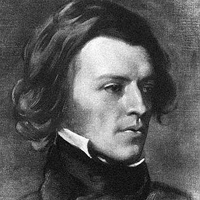Break Break Break by Alfred Lord Tennyson: Literary Analysis
Break, Break, Break provides almost a perfect example of a masterly lyric. It has somber music, vivid pictures, and profound feeling, expressed in a style marked by simplicity, economy, and directness of appeal.

Alfred L. Tennyson (1809-1892)
There are several simple instances of alliteration, as in 1. 8 ('boat on the bay'), 1. 10 ('haven under the hill'), and1. 15 ("day that is dead'). It is, however, in the arrangement of the vowel sounds in it that the poem becomes particularly interesting.
The real poetic beauty of the lyric could be seen and felt in the lines that are loaded with poignant suggestions, especially those that hint at the death of the poet's friend, Arthur Hallam, and the deep sorrow and sense of irreparable loss which he experienced on account of that. The indirect reference to the friend, through phrases such as 'a vanish'd hand' and 'a voice that is still', lifts the expression to a universal level. It is noteworthy that in these very phrases Tennyson has introduced two admirable examples of synecdoche (a classical figure of speech in which the poet uses the part, e.g., ivory, or honey, for the whole, e.g., elephant, or bee), which, through its typical form of understatement, heightens the melancholic effect.
It is in the last lines, above all, with their composite poetic impact, that Tennyson conveys his sense of an irreparable human loss most forcefully. Phonologically, the lines have alliteration in day-dead', assonance in 'tender-dead' (semantically, a terrible contrast) and 'grace-day', half-rhyme in 'tender-never', and euphony in the use of single sounds like /t/ and /r/. All these musical resources are put to use by the poet towards a powerful expression of his deep personal sorrow.
We are thus made to feel the pathos of the permanent loss, that death threats for a human being universally, even as we come to think of the poets own bereavement. And this feeling is deepened greatly by the three sharply contrasting pictures which precede in the main body of the poem, showing routine bubbling, cheerful life that goes on all around: the fisherman's boy that shouts, the sailor's lad that sings, and the stately ships that go on to their haven. Though dealing 'with sea-faring life, the pictures have an idyllic quality about them. The simplicity and clarity with which these pictures are drawn make the lines all the more powerful in their appeal.
The poem is thus particularly rich in its imagery. The images serve as a means for the poet to communicate his emotion. And there is a superb economy of style: the poet draws vivid pictures almost with single strokes. 'Grey stones', 'sister at play', 'stately ships' and 'haven under the hill' call up clearly visual images. 'Shouts', 'sings', and, in a strangely negative way, even the phrase, 'the voice that is still' appeal to the reader's sense of hearing; while 'cold' and 'the touch of a vanished hand' have markedly tactile associations. The poet's exceptional self-control and meticulous choice of detail make for the deep emotional impact of each image.
The heavy, monotonous roar of the sea-waves breaking on a rocky shore has often produced a deep, nameless sadness in the human heart. Poets and philosophers have given voice to their gloom in the presence of the sea since the very early days. Tennyson's heart is moved all the more deeply, while he sits by the sea, because the general feeling of sadness induced by the waves is made sharper and more specific for him by the recent death of his young, promising friend.
In fact, 'Break, Break, Break', though necessarily short, being a lyric, is particularly remarkable for the success with which its different elements and aspects — phonological, syntactic, semantic and stylistic — are integrated. Its stately rhythm and harmony, the three vivid pictures of seafaring life, the controlled and effective use of various figures such as apostrophe and exclamation, and the depth and sincerity of feelings expressed are all fused together to produce one finely unified piece of poetic art. The poem thus provides an apt example, at an early date, of Tennyson's excellence as a lyric poet.
Cite this Page!
Sharma, K.N. "Break Break Break by Alfred Lord Tennyson: Literary Analysis." BachelorandMaster, 13 Sept. 2014, bachelorandmaster.com/britishandamericanpoetry/break-break-break-literary-analysis.html.
Related Topics
Break Break Break: Critical Analysis
The Lotos Eaters: Critical Analysis
Lady Clare: Summary and Analysis
Victorian Consciousness in The Lotos Eaters
Salient Features of Victorian Literature
Elegy- Definition of Literary Term
Lyric- Definition of Literary Term
Biography of Alfred Lord Tennyson
 |
bachelorandmaster.com |